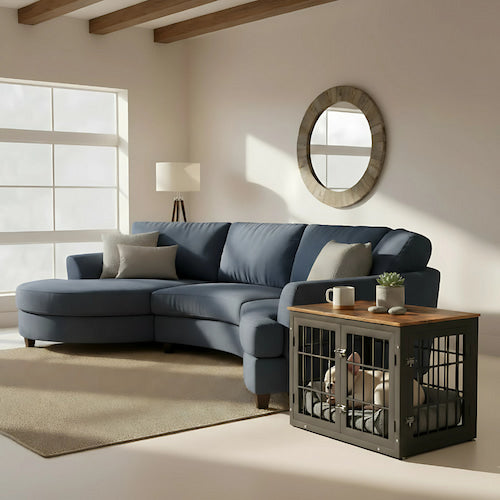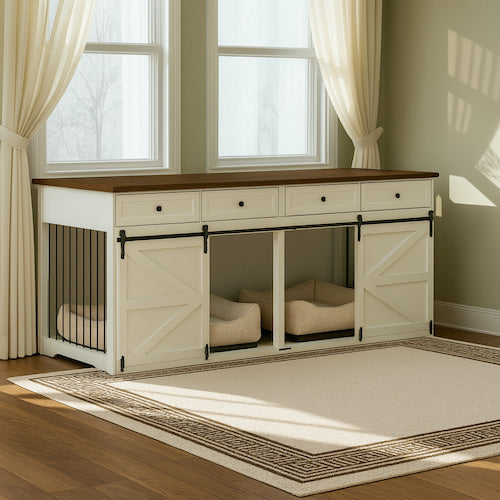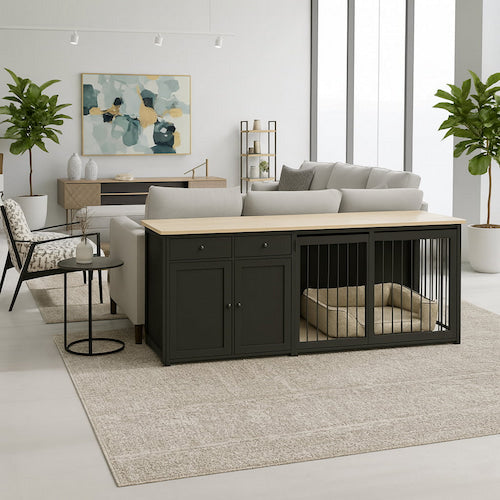3 Proven tips to train Your dog to eat slower
As a dog owner, you want the best for your canine companion, including their health and wellbeing. One issue that many dog and puppy owners face is the problem of their dogs eating too quickly, which can lead to health risks such as bloat.
In this blog post, we will provide you with three effective methods to train your dog to eat slower, including behavioral methods, slow feeder methods, and self-control methods.
By following these training methods, you can help your dog improve their eating habits, reduce the risk of health problems, and ensure they enjoy mealtime in a healthy and safe way.
Is eating too fast actually unhealthy for dogs?
Eating too quickly is not just a matter of bad manners, but it can also cause significant health issues. Dogs that eat too fast tend to swallow a lot of air, which can cause their stomach to distend and increase the risk of bloat.
Breeds with deep chests, such as Great Danes and Boxers, are particularly susceptible to this condition. Furthermore, dogs that eat too quickly may not properly digest their food, leading to vomiting and other digestive problems.
Getting Started
There are many commercial slow feeders available in the market that can help your dog slow down their eating, but you can also improvise with everyday items you may have at home. Golf balls, muffin tins, and plastic bottles with holes drilled in them can all be used as slow feeders. Puzzle feeders are also a great option to help your dog eat slower and in a more healthy manner.
Alternatively, you can use two food bowls, placing the smaller one upside down inside the larger bowl to create a DIY slow feeder. A large towel can be used to prevent messes and keep the feeder in place.
With that being said, lets get to the fun part and talk about the different methods for training your dog to eat slower.
3 proven methods to get your dog to eat slower
Method 1 - The Behavioral Method
The idea behind the concept: While some dogs may be naturally greedy eaters, there are certain behavioral factors that may contribute to this habit. Identifying these factors is the first step in correcting your dog's eating behavior.
- Protecting resources: Dogs see food as a valuable resource and may compete with other dogs in a multi-dog household for access to it. To prevent this competition and allow each dog to eat at their own pace, consider feeding them in separate rooms and implementing a five to ten-minute time-out after meals.
- Addressing food insecurity: Dogs who have experienced food insecurity in the past may eat quickly out of fear that the food will be taken away. Establishing a regular feeding schedule can help reduce this anxiety and teach the dog that meals happen consistently.
- Addressing boredom: Dogs who lack mental stimulation may eat quickly out of sheer boredom. To address this, make sure your dog gets enough exercise and consider using puzzle feeders to provide mental stimulation during mealtime.
Method 1 is a great way to understand the "why" behind why your dog may eat too fast and should be incorporated into any training for slowing dog your dog's eating. However, this method will take quite some time for your dog to learn and will not yield immediate results.
Method 2 - The Slow Feeder Method
Understand the concept : Controlling a dog's eating rate can be difficult, but there are several ways to slow them down. One effective approach is to use tactics or feeders that make it physically impossible for the dog to eat quickly.
Here are some ideas:
-
Use a slow feeder tumbler toy- These require the dog to solve a problem in order to get to the food. We have had the most success with this toy as it keeps them engaged and entertained, and allows them to eat slowly while having fun.
-
Use a Snuffle Mat - Instead of putting the dog's kibble in a bowl, scatter it onto their snuffle mat. This makes the dog use their nose to find and eat each piece of food, which slows them down.
-
Use a towel - Another variation on scatter feeding is to scatter kibble on a towel and then fold it over. The dog has to sniff out the kibble and work out how to retrieve it from the folds of the towel.
-
Use muffin tins - Distribute the dog's dinner equally between the pans of a large muffin tin. This means they have to take breaks and come up for air between each pan.
- Use a large object in their food bowl - Place a large, heavy object in the center of the dog's food bowl to force them to eat around the edges, slowing down their eating. Be sure to choose an object that is too large for the dog to eat or swallow.
Above all, the slow feeder tumbler toy seems to be the most successful method at getting our dogs to eat slower. This is because it not only slows down the eating process, but it also engages their mind and provides them with an interactive activity. The snuffle mat is another great option, as it provides the same level of entertainment. Other methods mentioned, such as using a towel, may slow down the eating process, but they do not necessarily provide the same level of mental stimulation and entertainment as the slow feeder tumbler toy.
These training methods are much more immediate and do not depend on your dog to learn these behaviors, which can be important for anyone looking to stop these behaviors in their tracks.

self control.. what is this?
Method 3 - The Self Control Method
Understanding the concept: If your dog is a fast eater, it's important to teach him some self-control and good manners around mealtimes. One way to do this is to train your dog to wait for your signal before he starts eating. This will enable you to use slow feeders or hand feed him.
Step 1: Teach the dog to "sit"
Take the dog's food bowl to his designated dinner spot and have him follow you. Before you put the bowl down, ask him to sit. If he doesn't sit, don't put the bowl down. He may be playful and jump around, but eventually, he will sit to get your attention. Once he sits, say "good" and put the food down.
Step 2: "No sit, no food"
If the dog gets up while you're putting the bowl down, say "Uh-oh" and take the bowl away. Insist that he sits and waits patiently until you put the bowl back on the floor.
Step 3: Teach the dog to "wait"
Once the bowl is on the floor and the dog is still sitting, hold up your finger to signal "wait." You want to be able to stand up and move away from the bowl before the dog starts eating. Start by staying close to the bowl, and if the dog moves before he's allowed, say "Uh-oh" and pick the bowl up. Start over with the "sit" command. The dog will quickly learn that breaking the "sit" command will only delay his meal.
Step 4: Move away from the bowl
Once the dog is sitting and waiting for the release command that gives him permission to eat, you can start stepping away from the bowl. Keep the "wait" signal in place, and drop your arm when it's time for the dog to start eating. This is a useful way of teaching your dog some self-control around mealtimes.
Final Thoughts...
In conclusion, training your dog to eat slower is an essential step to ensure their health and wellbeing. Whether you use behavioral methods, slow feeder methods, or self-control methods, the key is to find what works best for your dog's personality and preferences. By using these training methods consistently, you can help your furry friend enjoy mealtime in a healthy and safe way, while reducing the risk of health problems like bloat.
Remember, slow and steady wins the race, and your dog will thank you for it!
Hope you enjoyed the read and please feel free to check out our site and like us on all the socials.
For more helpful resources for you and your dog, check out our blog and resources page






Leave a comment